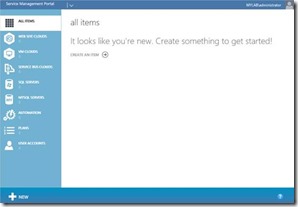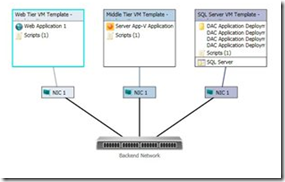Common Uses & Examples of Automation

By David Allen, Microsoft System Center MVP.
IT process automation is the ability to orchestrate and integrate tools, people and processes through a workflow. Automation benefits include, reduced human errors, faster response to problems and more efficient allocation of resources.
By increasing the levels of automation and eliminating common, repetitive tasks, companies can reduce operational costs, as well as reduce the amount of specialized staff needed to manage its systems. This also means, highly skilled IT professionals can be freed up to manage more strategic company projects and initiatives, and ultimately provide a higher quality of service to this business. Although the benefits of automation meets the business these objectives of reducing costs, increasing productivity, and maximizing efficiency, the biggest concern is integration between applications and infrastructures. Automation should be a best practice in most organizations as it will assist in managing and integrating across increasingly complex infrastructures.
Below are three common uses & examples of IT automation that save time and money in the data centre:
1. Self Service
· Although self-service isn’t a specific example of automation, it is a very important offering that is driven by automation. As processes become automated, the next logical step is to provide a portal for end-user self-service, which will further reduce the amount of time required by IT staff and further the reduction in cost.
The Windows Azure Pack for Windows Server provides a portal, consistent with Azure, to provide users with a consistent view of the self-service services available within the data centre, a service provider, or Windows Azure.
Figure 1 - Windows Azure Pack
The Windows Azure Pack, once implemented, provides the portal as shown in the image above. This portal allows administrators to define self-service services that are available to users, whether they be virtual machine, website or database provisioning. The real power of Windows Azure Pack for Windows Server though is in its extensibility, as the portal can be easily updated to include any company specific automated processes, such as application or user provisioning.
2. Virtual machine provisioning
· In today’s virtual world, the provisioning, and de-provisioning, of virtual machines is common place, and many hours are spent following the business processes for this to occur and to technically perform the work required. However, in most scenarios, the provisioning and de-provisioning of a virtual computer can be automated, and with System Center 2012 it’s not only possible to achieve this for single computers, but for multiple computers as part of an application; the deployment of multiple virtual computers, with different configurations, based on a template, can be fully automated.
Figure 2 - System Center Virtual Machine Manager Service Template
A service template, as shown above, defines the configuration of a service. The service template includes information about the virtual machines that are deployed as part of the service, which applications to install on the virtual machines, and the networking configuration needed for the service. A great example is shown in the image above, where there is a SQL Server provisioned with a number of DAC packages applied, a middle tier computer configured with an application delivered by Server App-V, and a web tier computer with the required roles and features enabled, and all communicating on the same network.
3. New User Provisioning
· The provisioning of new user accounts in Active Directory is usually a very repeatable task, which over a length of time can consume a large number of work hours. By automating this basic task, accounts can be created in a reliable and standardized way, and can free up resources for other more important IT tasks.
Figure 3 - System Center Orchestrator Runbook
This example is one that can be extended to provide far more functionality than simply creating a user account and mail enabling the user. Some great examples of automated user provisioning have included, setting group memberships based on department, generating a random password and emailing to manager, setting network access permissions, setting expiry date and assigning to the relevant group or organisational unit.
The above are three common examples of automation, and for each there will be more than one way to achieve the desired outcome. With the use of Microsoft Windows Server and System Center, automation can be provided not only across the Microsoft stack of products, but also the majority of other third party products, with out of the box integration into VMWare ESX and XenServer, support for cross-platform operating systems, and integration into HP, IBM, CA, BMC and other vendor applications. This diversity provides everything required to implement automation in almost any data centre, as you do not have to have all the System Center products deployed; automation can still be achieved if a CA product is used for service management, for example.
In summary, automation helps to automate, integrate, and orchestrate operational processes across multiple data, departmental, and application silos. Using System Center for automation can enable and enforce best practices in an IT organization and help align IT services with business objectives through repeatable, reliable, and standardized best practices. However, it must be remembered that having great tools available will not make bad process better. It is important to make sure the business processes are fit for purpose before automation of the process is attempted.
So, where to start…. Well, initiatives such as ITIL outline best practices for all IT activities, and the service support areas of ITIL are, incident, problem, configuration, change, and release management, and these make up the daily operational tasks within IT. As ITIL best practices are continued to be implemented, this is a good place to start with automation since these are usually the most critical areas of IT operations.
Find out more information on Windows Azure Pack for Windows Server, Windows Server and System Center.


